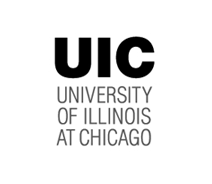Glucose Metabolism in Sickle Cell Disease
| Status: | Recruiting |
|---|---|
| Conditions: | Anemia, Diabetes |
| Therapuetic Areas: | Endocrinology, Hematology |
| Healthy: | No |
| Age Range: | 18 - Any |
| Updated: | 10/28/2017 |
| Start Date: | May 1, 2015 |
| End Date: | December 1, 2020 |
| Contact: | Victor Gordeuk, MD |
| Email: | vgordeuk@uic.edu |
| Phone: | 312-996-5680 |
The purpose of the study is to better understand how the body handles sugars glucose and
fats, such as cholesterol and triglycerides in sickle cell disease, and what puts certain
persons at risk to develop diabetes. This understanding may help us to find new treatments to
control blood sugar and prevent diabetes in people with and without sickle cell disease
(SCD).
In this research, DNA and RNA will be isolated from blood cells. DNA will be used to find
genes that cause or protect from diabetes, high cholesterol and high triglyceride, and RNA
will be used for studies designed to find out how genes are doing their job of eventually
producing proteins.
fats, such as cholesterol and triglycerides in sickle cell disease, and what puts certain
persons at risk to develop diabetes. This understanding may help us to find new treatments to
control blood sugar and prevent diabetes in people with and without sickle cell disease
(SCD).
In this research, DNA and RNA will be isolated from blood cells. DNA will be used to find
genes that cause or protect from diabetes, high cholesterol and high triglyceride, and RNA
will be used for studies designed to find out how genes are doing their job of eventually
producing proteins.
Sickle cell disease (SCD) is due to homozygosity for a Glu6Val mutation in HBB (sickle cell
anemia; hemoglobin SS) or to compound heterozygous forms like hemoglobin SC disease and
hemoglobin S-β thalassemia. Past studies suggested a low prevalence of diabetes in patients
with SCD.10 Improvements in treatment and care have increased the life span of patients.
This, along with the wide availability of high calorie diets and increasing adiposity in SCD
raises that possibility that the prevalence of diabetes is increasing in SCD. Our study is
designed to characterize the changes in metabolism that occur in sickle cell disease and to
identify clinical, genetic and genomic risk factors for the development of diabetes. Our
hypothesis is that non-overweight subjects with SCD have relative protection from diabetes
and metabolic syndrome, but that those individuals who do become overweight have a dramatic
increase in the rates of diabetes and metabolic syndrome. Lean SCD subjects will not have
simply a neutral, but an overtly anti-diabetic phenotype (e.g. better glucose tolerance and
lower metabolic syndrome markers). The two main study aims are as follows; Aim 1. Define the
metabolic status of adult SCD subjects according to normal or increased BMI.
Aim 2. Determine genetic and genomic predictors of overweight, metabolic syndrome and
diabetes in SCD subjects.
anemia; hemoglobin SS) or to compound heterozygous forms like hemoglobin SC disease and
hemoglobin S-β thalassemia. Past studies suggested a low prevalence of diabetes in patients
with SCD.10 Improvements in treatment and care have increased the life span of patients.
This, along with the wide availability of high calorie diets and increasing adiposity in SCD
raises that possibility that the prevalence of diabetes is increasing in SCD. Our study is
designed to characterize the changes in metabolism that occur in sickle cell disease and to
identify clinical, genetic and genomic risk factors for the development of diabetes. Our
hypothesis is that non-overweight subjects with SCD have relative protection from diabetes
and metabolic syndrome, but that those individuals who do become overweight have a dramatic
increase in the rates of diabetes and metabolic syndrome. Lean SCD subjects will not have
simply a neutral, but an overtly anti-diabetic phenotype (e.g. better glucose tolerance and
lower metabolic syndrome markers). The two main study aims are as follows; Aim 1. Define the
metabolic status of adult SCD subjects according to normal or increased BMI.
Aim 2. Determine genetic and genomic predictors of overweight, metabolic syndrome and
diabetes in SCD subjects.
Inclusion Criteria:
- Major sickling genotype (hemoglobin SS, Sbeta0-thalassemia, SOarab, SDpunjab)
- Age >35 years
- BMI <25 kg/m2 or >26 kg/m2
- Steady state, defined as >two weeks from a hospitalization for vaso-occlusive crisis,
infection or surgery and not requiring immediate parenteral medication for pain
control
- Fasting state (>8 hours since ingesting food or medication for diabetes)
Exclusion Criteria:
- Patients receiving insulin therapy
- Acute inflammatory or infectious illness or injury
We found this trial at
1
site
2035 W Taylor St
Chicago, Illinois
Chicago, Illinois
(312) 996-4350

Phone: 312-996-5680
University of Illinois at Chicago A major research university in the heart of one of...
Click here to add this to my saved trials